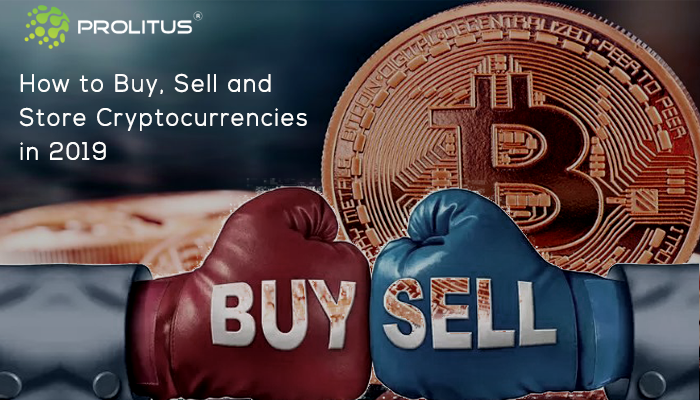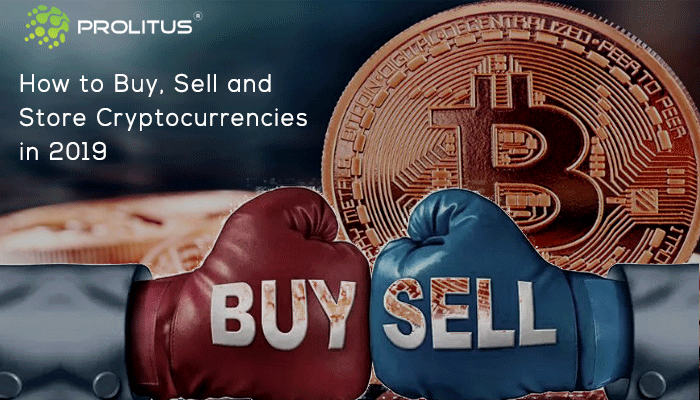So you waited long enough to understand the market and now you are confident enough to play with the hyped “cryptocurrency”. Do not enter the disruptive market in 2019 using a year old guide. The landscape is aggressive and things move real fast in cryptosphere. Play safe – is the cardinal rule of the revolutionary and disruptive market. While the market witnessed its share of bullish and bearish trends, the crypto market capitalization kept growing. Currently, the total market cap is hovering around $114.05 Billion which is way higher than $0.04 billion in the year 2012.

Assuming that you are comfortable with the cryptocurrency verbiage, let’s get the dice rolling.
Starting from the basics, you need to know how to buy, sell and store cryptocurrency without compromising the security. Things have changed tremendously since you started using your first cryptocurrency wallet. This guide is for both a Pro and a novice in the cryptosphere.
How to buy and sell cryptocurrency?
Before you get the answer, it is important to know what you plan to buy. As the cryptocurrency landscape turned aggressive post Bitcoin fiasco. The success led to revolution and today hundreds of cryptocurrencies are swarming the market.
Trust us some projects are really promising!
It becomes important to know what you are planning to buy because not all exchanges and their wallets support the trade of every cryptocurrency.
Lets us explore some ways of buying crypto:
Peer to Peer Exchanges
What better than buying the cryptos using local currency and at the best price? Peer to Peer exchange allows a community of crypto enthusiasts come together to trade. Platforms like Local Bitcoins.com have offered the crypto community an easy way to buy from someone who is willing to sell at the price they wish to buy or is ready to accept the local currency. Offering better speed, least friction and no cap on buying amount, P2P exchanges must be used only after a thorough scan to avoid being scammed and make sure you know the cost of the transaction.
Centralized Exchanges
A more regular way of buying cryptocurrencies is to turn to exchanges like Coinbase. With a digital wallet, these centralized exchanges allow you an intuitive interface to buy cryptocurrencies easily. All you need to do is complete a full KYC and transfer the fiat equivalent to the exchange’s bank account. The fiat must reflect in your wallet within 24 hours, you need to buy the desired cryptocurrency amount which reflect in your wallet within 4-5 hours. Its simple but may take a little longer. Remember nothing comes for, they do charge a fee per transaction.
ATMs
If you are living in quite a futuristic place, check out for a Bitcoin ATM close by. They work like a breeze. Deposit your fiat in the ATM and it transfers crypto to the wallet you desire. It is a zero-effort way to buy cryptocurrencies but be careful as they charge you more for this ease.
Decentralized Exchanges
A decentralized exchange stands for its name as the operations do not allow holding of customer’s coins. It has a system in place that moves the actual currency only when an order needs to be executed between the users. It has gained tremendous traction due to its trustless nature of execution. It gives anonymity true meaning as the personal details of the user are not asked. Hosted over nodes, it offers highest grade of security and no downtime.
Take a break!
With lots of ways to buy cryptos, the good news is that you sell the cryptos via the same channels.
P2P Exchanges – Put up a sell order and as soon as a buyer’s requirement meets your criterion, the order is placed and you get paid in the currency you desire.
Centralized Exchanges– Via a wallet App sell the cryptocurrencies and get the fiat transferred to the account within 4-5 hours.
ATMs – They allow you to sell the cryptocurrencies and disburse the cash right there like any other ATM.
Security Alert!
Security of cryptocurrency is prime.
The blockchain is immutable, but the ecosystem around is yet to be more robust. We have been witness to many wallets and exchanges that keep the cryptocurrencies safe, it is important to keep yourself updated about the changing landscape.
How to buy and Store cryptocurrency?
Before knowing the right ways to store, let us first understand where your coins are. What you see in a wallet interface is just a number. The key to your coins which are actually on the blockchain is stored in your wallet.
The “Private Key” is what keeps the hackers to get to the blockchain and steal your coins. It is critical to keep your “Private Key” secure always.
If the “Private Key” is lost, you lose all the coins. At no cost must the details of the Private Key be compromised. Let us explore the options in the market to keep them secure:
• Software Wallet or Hot Wallets
Software wallets are the wallets that let you store the coins. Also known as Hot wallets, they store the Private Key and are more susceptible to hacks as they stay connected to internet. Using a desktop wallet over a mobile App wallet is always advisable by block geeks. The reason that outweighs Mobile Apps is that they remain connected to internet always and anyone can hack into the wallet. Private keys stored on a wallet that does not stay connected to internet very often is an ideal way to ensure the coin security. These wallets are easy to set up and are free to install.
• Hardware Wallet or Cold Wallets
While cold wallets serve same purpose as that of hot wallets, they differ from their software counterparts in being kept offline. However, these wallets can be plugged into a computer with a dedicated wallet app for storing the cryptos. Though, setting them up might be a little complicated yet they are much secure as compared to their software counterparts.
Ledger Nano S or Trezor are some of the top-selling hardware wallets.
• Paper Wallet
The term is self-explanatory! Print the private key on a paper and secure it in your bank locker. Next time you wish to transfer your coins to the wallet, simply scan the key and the coins get transferred. Old school and susceptible to loss or replication, the paper wallet is an option but does not top the pile.
To wrap
Whether you wish to buy, sell or store the coins, the first aspect you need to keep in mind is the security. If you have a brilliant idea for a wallet or an exchange, technocrats at Prolitius can provide you with full stack technology solutions to transform the idea to a digital reality.





